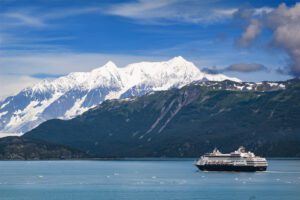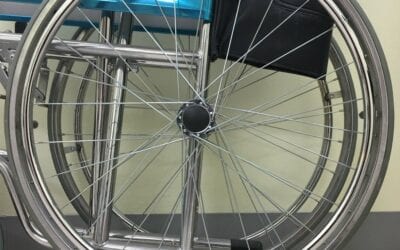It’s time for the cruise industry to begin installing “man overboard” systems on all cruise ships immediately so they can detect incidents in real-time to better ensure rescues.
 According to news reports, at about 3 am on May 17, while traveling from Juneau to Skagway on an Alaskan cruise, a woman, Selena Pau Pres, 40, went overboard from the Celebrity Solstice. The ship was traveling in the Lynn Canal at the time. The Lynn Canal is an inlet that extends about 90 miles from the inlets of the Chilkat River, south of Skagway, to the Chatham Strait.
According to news reports, at about 3 am on May 17, while traveling from Juneau to Skagway on an Alaskan cruise, a woman, Selena Pau Pres, 40, went overboard from the Celebrity Solstice. The ship was traveling in the Lynn Canal at the time. The Lynn Canal is an inlet that extends about 90 miles from the inlets of the Chilkat River, south of Skagway, to the Chatham Strait.
Passengers who go overboard in frigid water have a very short potential survival time.
The water in the Lynn Canal has a temperature of about 40°F (4.4°C). According to survivability charts from the University of Minnesota Duluth, even with flotation and protective gear, a person could survive for no more than five hours in those waters. Without the gear, the survival time would be no more than about 30 minutes.
Unfortunately, Ms. Pres isn’t alone in going overboard from a cruise ship and dying. The statistics of people going overboard from cruise ships are eye-opening. Cruise Junkie has compiled passenger and crew cruise ship and ferry overboard data. From January 2000 through May 2022, 278 people, including passengers and crew on major cruise line ships, went overboard. Some of the passengers who went overboard were rescued, but most died. If COVID hadn’t shut down the cruise industry for much of 2020 and 2021, it’s likely that the overboard stats would be grimmer.
Update: European news outlets are reporting that a middle aged woman went overboard from the Azamara Quest on June 5, as the cruise ship was sailing in the Mediterranean off the coast of Mallorca. A search began at 2am local time. More than 24 hours later, she hasn’t been found. The Quest has no “man overboard” system.
Even though their numbers are small, “man overboard” victims deserve a better chance of rescue than they have from cruise ships now.
While 278 people are a tiny percentage of the several hundred million people, passengers, and crew, who cruised since January 2000, I think that every cruiser deserves better “man overboard” (MOB) protection and a better chance of rescue than they have now.
The Cruise Vessel Security and Safety Act of 2010 (CVSSA) was passed in part to address the cruise industry’s “man overboard” (MOB) problem as well as other safety and security issues. Some of the directives found in the CVSSA have been carried out on most cruise ships and have no doubt been effective in improving passenger safety.
In particular, to help prevent MOB occurrences, cruise ships are required to have railings on ships that are at least 42 inches (1.07m) high. Most cruise lines have met the railing height requirement. Since doing that, the cruise industry trade association, Cruise Lines International Association (CLIA), says that “man-overboard” incidents are only “a result of an intentional or reckless act” and there are “no known cases of someone acting responsibly who has accidentally fallen over the railing of a cruise ship.”
I don’t know how CLIA can make that statement. Many of the circumstances of passengers going overboard are unknown. Even when passengers have been seen going overboard on video by crew, they often can’t actually tell what precipitated the accident.
Passengers who get drunk aboard cruise ships bear responsibility for their actions, but so do cruise ships that continue to serve them when they’re visibly intoxicated.
Some passengers have been reportedly intoxicated prior to going overboard. While intoxicated passengers have to be held responsible for their actions, I’ve seen visibly intoxicated passengers continue to be served alcoholic beverages on cruises I’ve personally been on. In those cases, doesn’t the cruise line bear responsibility too?
Even if CLIA could make a better case for its statement, I have a problem with it. CLIA seems to be saying that now that the railings on ships have been raised, there’s nothing more that they can do. But there is more that they can do to protect passengers and crew.
Cruise lines like Celebrity could install automatic MOB systems that detect passengers or crew going overboard in real-time, then immediately notify the ship that it’s happened. The CVSSA requires cruise ships to install these systems, but to date, the U.S. has been lax in enforcement of the requirement.
The MOB systems use complex motion detection systems to send a signal to the ship’s bridge so that the ship’s officers can take immediate action to rescue the person who’s gone overboard. MOB systems can even provide rescue support by tracking MOB victims using infrared heat signature technology and live video feeds.
Without a MOB system in place most passengers who go overboard have very little chance of survival.
Without a MOB system, the successful rescue of MOB victims is made difficult. While ships have extensive video cameras that may likely record someone going overboard, the ship would have to be actively monitoring all cameras 24/7 and immediately go into action. Immediacy is key because it typically takes a cruise ship about a mile (1.6KM) to stop when cruising at sea. Today, if a ship without a MOB system gets a timely MOB report and it takes just 15 minutes for the crew to confirm the report, the ship will have typically traveled about seven miles since the person went overboard.
Particularly in rough seas, bad weather, or frigid waters like those into which Selena Pau Pres reportedly fell, time is the enemy of MOB victims’ ability to survive.
The initial problem of MOB reliability is reportedly solved.
In the past, the cruise lines complained about false positives from “man overboard” systems and in fact, early versions of the systems were plagued by them. The ship’s bridge officers too often could get an indication that a person went overboard when it didn’t happen. That could cause serious, unnecessary disruptions of cruises. Today’s systems reportedly no longer have that problem and at $300K to $500K, the MOB systems are relatively inexpensive compared to the cost of today’s cruise ships.
It’s hard to understand why most cruise lines continue to refuse to install MOB systems on their ships. Disney has installed them on its cruise ship fleet. As far as I know, they’re the only cruise line to do so.
Cruise lines should equip all their ships with MOB systems by the end of 2027 and if they refuse to install them, the U.S. government shouldn’t let them enter U.S. waters.
The cruise lines need to do more for passenger safety. I call upon the cruise industry to voluntarily install MOB systems on all their ships by the end of 2027, five years from now. It’s time for the cruise industry to do its utmost to stop future guests from becoming new MOB death statistics.
I also call upon the U.S. government to get serious about the protection of the American cruising public. Under CVSSA, the U.S. government should require all cruise ships and ferries stopping in U.S. ports and sailing in U.S. waters to have “man overboard systems installed by the end of 2027 or be denied access to U.S. waters.

READ ALSO:
Stop Carnival Cruise Lines from illegally contaminating our oceans and air
How baggage fees can change. They exceed all other airline charges.
After many years working in corporate America as a chemical engineer, executive and eventually CFO of a multinational manufacturer, Ned founded a tech consulting company and later restarted NSL Photography, his photography business. Before entering the corporate world, Ned worked as a Public Health Engineer for the Philadelphia Department of Public Health. As a well known corporate, travel and wildlife photographer, Ned travels the world writing about travel and photography, as well as running photography workshops, seminars and photowalks. Visit Ned’s Photography Blog and Galleries.



